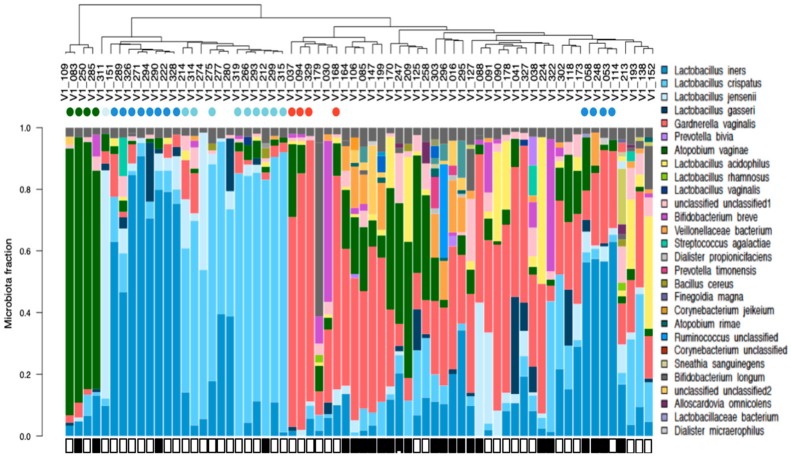Figure 2.
Vaginal microbiota clustered by bacterial similarity in pregnant women prior to treatment, at 13 weeks of gestation (n = 66). Each bar represents the vaginal microbiota of a single woman and corresponds to the participant identification (ID) number labeled in the dendogram, clustered using average linkage cluster analysis. Species found in >1% abundance are represented by a unique color. Species with <1% abundance in the sample are pooled into a single fraction at the top of the bar in grey color. Women who have a single bacterial species which dominated more than 40% of their vaginal microbiota are identified with a color dot below their identification number that corresponds to the dominant species (Dark green, Atopobium vaginae, n = 4; Very light blue, Lactobacillus (L.) jensenii, n = 1; blue, L. iners, n = 12; light blue, L. crispatus, n = 9 and red, Gardnerella vaginalis, n = 4). Black rectangles are used to denote women with a bacterial vaginosis (BV) Nugent score, and white rectangles are used to identify women with an Intermediate Nugent score.

